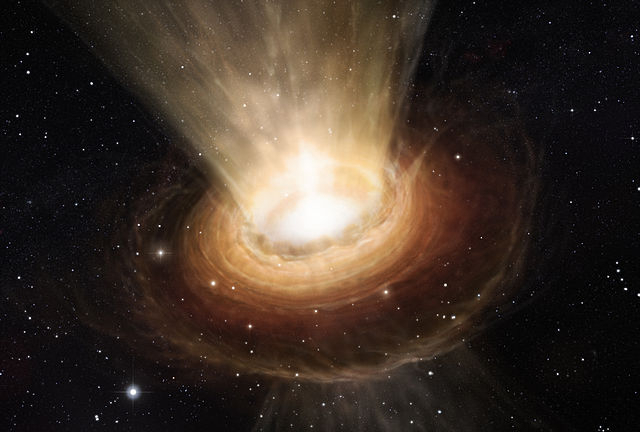Astronomers have discovered eight 'echoing black hole binaries' within the Milky Way. The discoverywas made possible with the help of a new automated search tool called "Reverberation Machine." The research was conducted by a team from MIT in collaboration with NASA.
As per ScienceAlert, the findings were published in a research article titled, "The NICER "Reverberation Machine": A Systematic Study of Time Lags in Black Hole X-Ray Binaries," in The Astrophysical Journal.
Black holes are understood to be a well of gravity wherein nothing can fall in or get out. This is the reason why they appear so dark and are hard to detect. But when the black hole draws in dust and gases from an orbiting star there are spurts of X-ray light produced that bounce and echo off the gas swirling into it. For a moment this illuminates the black hole's surroundings, as reported by the Indian Express Technology.

The team at MIT had developed a search algorithm that combs through the data in the Neutron Star Interior Composition Explorer (NICER) of NASA. This algorithm could identify at least 26 black hole X-ray binary systems which had emitted X-ray outbursts. The Reverberation Machine was used by the team of researchers to look into the archival data from the NICER X-ray observatory, to search for any giveaway of black hole echoes.
Out of these, only 10 systems were bright and close enough to Earth for the researches to identify X-ray echoes in the middle of the outbursts. Among these 10, eight of them were unknown. The study's first author and Astrophysicist Jingyi Wang of MIT revealed that they could "see new signatures of reverberation in eight sources that vary in mass from five to 15 times the mass of the Sun and are all in binary systems."
Researchers then used their algorithm to examine the 10 black hole binaries and depending on their spectral timing and X-ray echoes split them up into two groups. This technique assisted them in rapidly tracking the changes in X-ray echoes at every stage of the outburst.

It is by comparing almost 10 X-ray echoes across systems, the researchers have composed a general picture of a black hole evolving in the middle of this outburst. Observations were made on a "hard state and soft state."
The hard state is the initial state where the black hole generates a corona and emits high-speed jets of plasma from the regions over its poles. This state lasts for a few weeks, before the soft state takes over in the form of lower-energy X-rays from the accretion disk. The corona is defined as the region of flaming hot electrons between the inner edge of the accretion disk and the event horizon as explained by ScienceAlert news.
The researchers believe that this new discovery could be of extreme help in determining the impact of much larger and supermassive black holes at the centre of a galaxy in the creation of a galaxy's formation.
Erin Kara, assistant professor of physics at MIT, stated that, "the role of black holes in galaxy evolution is an outstanding question in modern astrophysics. Interestingly, these black hole binaries appear to be 'mini' supermassive black holes, and so by understanding the outbursts in these small, nearby systems, we can understand how similar outbursts in supermassive black holes affect the galaxies in which they reside." Kara is currently working on converting black hole echoes to sound.
According to SciTech Daily, the research team is experimenting ways to draw the immediate proximity of a black hole via X-ray echoes. These echoes present time delays between two types of X-ray light: light emitted directly from the corona, and light from the corona that bounces off the gas and dust spiraling into the black hole.
This will further reveal how the black hole's corona and disk evolve as it consumes stellar material. We're at the beginnings of being able to use these light echoes to reconstruct the environments closest to the black hole," Kara explained.
Apart from Jingyi Wang, other co-authors include Matteo Lucchini and Ron Remillard at MIT with collaborators from Caltech and other institutions.








